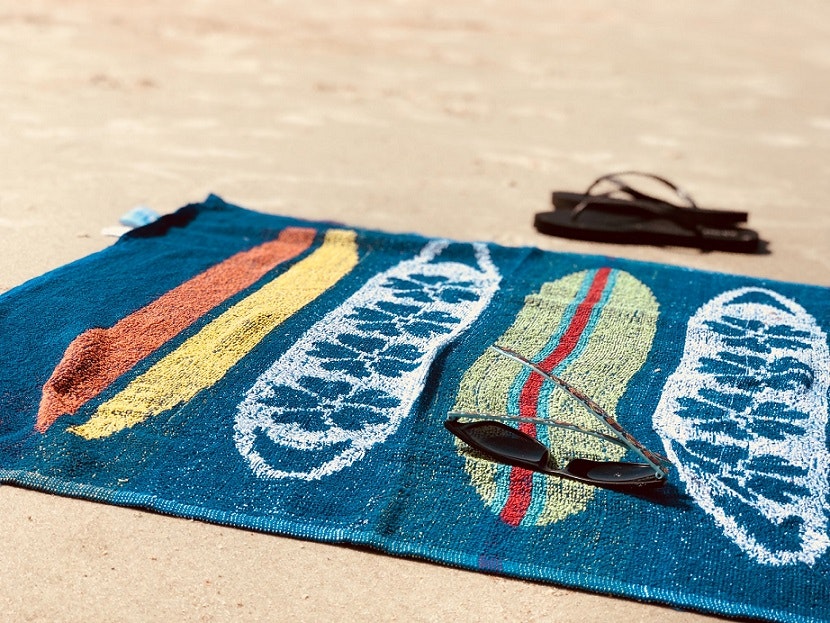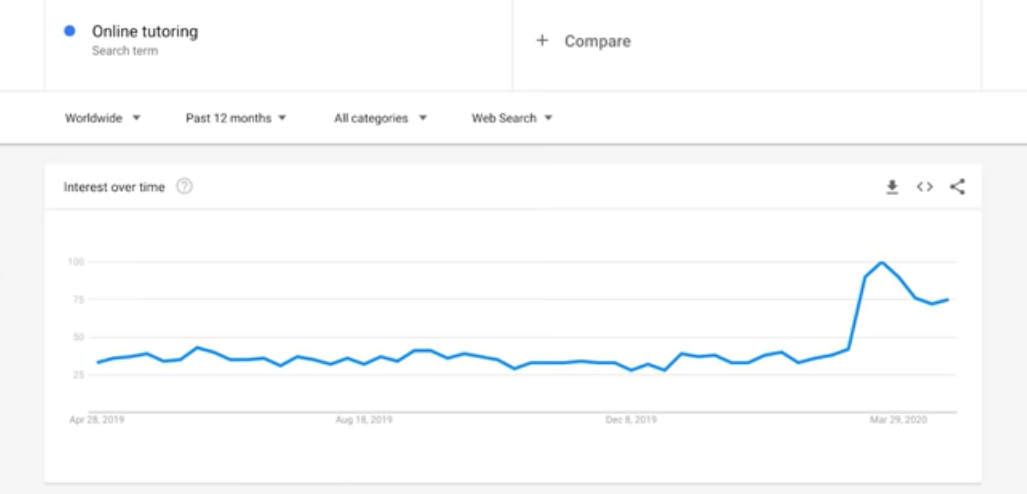How To Make Money Online in the COVID-19 Economy
Looking to make some extra money during the coronavirus economy? In this video, we'll present to you five business ideas that you can start right now. We'll also provide actionable tips on how you can get started with them and the pros and cons of each.
Video transcript: Welcome to a new angle of my apartment. I tried to clean the place up a little bit for you guys. One thing that I can't control is the construction that's going on in the apartment above me. So, hopefully, as you're watching this, you don't hear too much noise because I hear that and I'm hoping it doesn't interrupt my train of thought.
Two or three weeks ago, I published a video about 20 business ideas for the coronavirus economy. That video blew up and the vast majority of people who saw it said they got a lot of value out of those ideas. But some of you real sassy watchers caught me on some terminology. You said, "Well, these aren't business ideas, these are just product ideas."
Well, you know what, I see your point. And so that's why today I'm going to talk about five actual different business ideas that you can pursue in the COVID-19 economy. Not only will I tell you what those ideas are, but I'll also tell you how you can get started on them and I'll share a little personal flavor because I myself have direct experience with four out of the five of these ideas.
Now, I don't have experience with them in this new economy as it's affected by the Coronavirus epidemic, but I can still try to share some tips and insights so that if you pursue these business ideas, you can succeed.



1. Start a Print-On-Demand Business

Okay, so you know I'm gonna talk about dropshipping in this list, but I'm not gonna start with dropshipping. Instead, I'm gonna start by talking about print-on-demand. Why would I do that? That's crazy. Oberlo and print-on-demand apps are like competition, right? Well, listen. Whatever you can do to start an online business right now, props to you, it's hard no matter what, but success is possible no matter what. Let's back up for a second and talk about what print-on-demand is.
→ Click Here to Launch Your Online Business with Shopify
So print-on-demand is a form of online selling where you're able to white label. That means customize a limited range of products. Now, the benefit is that you don't have to buy the inventory for those customized products upfront. Instead, you only order a customized product to send to your customer after your customer has made the sale.
So you don't touch any of this customized inventory and the supplier of the customized stuff sends it straight to your customer.
That's a lot of custom stuff. Maybe I can make that even simpler. Basically, you, the entrepreneur, would set up an online store preferably with Shopify. And then once you've got your Shopify store, you install a print-on-demand app, like Printful.
What you'll do is then you have to create your own designs for the range of products that Printful offers. These are like T-shirts and aprons and hats and children's clothing and beach towels and all kinds of stuff. You supply the designs and give these otherwise blank white beach towels a custom look. Then you add that to your Shopify store. A customer sees your custom beach towels, they get super excited, they buy it, you go to Printful, process the order and Printful sends the beach towel to your customer.
Beach towels was a bad example, no one's lying on the beach right now, I know, but I think you get the point. What's even cooler is that you can also get your print-on-demand supplier to put your logo on the packaging or the packing material. So in this case, the customer gets a fully branded experience.
The appeal of print-on-demand is that it requires so little upfront investment.
And if you're good at design, it's an easy way to translate your artistic know-how into products that you can sell online. What's also cool is that you have a whole wide range of products that you can develop and you can really build a brand with print-on-demand.
What's not so cool is that the margins are quite high. So you might end up paying $12 to $16 to order a T-shirt from your supplier, and it's unlikely that you can charge more than say $25, max $30 when you're selling that T-shirt. That could cut into marketing cost and marketing is still something that you as the shop owner will be responsible for. Nonetheless, print-on-demand is pretty cool. And as someone who dabbles in the creative arts, I really enjoyed being able to take what I normally do as a hobby and turn it into a little business.
I didn't make it rich with print-on-demand, but I had a lot of fun and it's really easy to set up print-on-demand stores. For a list of other products that you could sell with print-on-demand as well as apps that help you build these stores, check out this blog post.
2. Teach Online

I'm still not gonna talk about dropshipping even though it makes total sense, too. Instead, the next thing I wanna talk about is online teaching. Whoo! This is a big one.
Online learning platforms have seen a 50 percent surge in use since the outbreak of the coronavirus.
Right now, everyone is at home. That includes students, and it also includes people who want to just pick up a new skill or hobby with all of this downtime in their own apartments. In fact, go to Google Trends and search online tutoring and you're gonna see that search term just skyrocket in search volume in the very recent past.

Don't think you need a Master's degree in something to teach it either. You don't have to be an expert, even if you're a beginner and you've gone through your own beginner training, you can go back and create your own training that you think works better to convey the material that you're talking about.
And what material could you talk about? Well, anything from accounting and marketing and biology to something like how to cook pasta or how to speak French.
Think really creatively here about what you know. I know you know something that you can be teaching to others. Once you figure that out, you have to market yourself and your services.
There are tons of platforms that make this possible and here's the blog post that will give you everything. But, what you won't get in that blog post is my personal experience with teaching.
That's because this is the one where I don't have any personal experience. But stay tuned, because I will share my experience with the gig economy, that's the next business idea on our list.
3. Get a Gig

If you're looking for a business to start in this new COVID-19 economy, then you've got to maybe think small at first. This is probably not the time when you're gonna get that consulting gig at McKinsey. However, you can be making money building skills and even controlling your own schedule with a gig.
What do I mean by gig? A gig can be literally any small job or task from which you can earn money.
Gigs are usually not ongoing work for the same client, instead it tends to be shorter bits of work with different clients.
You can think of gigs like Uber drivers and Airbnb hosts, but don't. Those are not the right gigs to get into right now. Instead, think about the things that you wish you could hire someone to do in your day to day life. Maybe that's data entry, or video editing, or blog post writing, or transcribing. The list goes on.
Here's my experience with the gig economy. A while ago, I used a site called Thumbtack and I offered to review people's resumes. I've changed careers quite a few times in my life, and I feel like I know what it takes to help people improve their resumes to get the job they really want.
I got my first paying... Maybe it was TaskRabbit, one or the other. Anyway, I got my first paying client on this platform by being really specific about the value that I offered and the problems I solved.
For example, when I was editing resumes, I didn't just say, "I'm gonna edit your resume." I tried to really target the problem and my expertise. So if my expertise was editing your resume to change industries, that's exactly what I said, "I will edit your resume to help you change industries." So I was missing out on the clients that wanted to get to one level above in the same industry that they were. But I was especially good at attracting people who wanted to change industries.
So if you're thinking about entering the gig economy, specifically, by selling your work, don't be afraid to niche down a little bit.
Saying no to some clients means a lot more clients will say yes to you.
4. Start a Dropshipping Store

Okay, it's time we talk about dropshipping. I mean, after all, this is Oberlo, this is our channel. So let me be a little bit more personal with you when it comes to starting a dropshipping store.
We've tried to basically drown you in resources to help you build your online store here on our YouTube channel and with our course Oberlo 101. And as of filming, Oberlo 101 is free, meaning if you sign up right now, you'll have access to it for the rest of your life for free.
Nonetheless, I think a lot of you are wondering right now not, "How do I start dropshipping?" but "Should I start dropshipping?" And I've got some stats that suggest that now is a good time, but not the perfect time to get started.
Business strategists are saying that the coronavirus may drive ecommerce sales beyond original 2020 projections. People are shopping online right now. But they're not shopping for the same thing that they used to shop for.
Stackline, a retail software company, even did a study, and they put together a list of the 100 top-selling products across ecommerce channels and the 100 bottom-selling products. There have been studies showing that some products, in particular, are surging in sales right now and some are not.
So the key to dropshipping is to be really careful about your product research.
But the cool thing about dropshipping is that you can afford to make a mistake. What I mean by that is when you start a dropshipping store, you're able to literally import products from AliExpress to your Shopify store with a single click.
You don't have to pay for any inventory upfront because you only pay for products when you make sales. What that means is if you add a product to your store and it's not selling, well, you just delete the product. It's really not a big deal.
I see a lot of new dropshippers pulling their hair out because they just wanna know if they're selling the right product. If you're getting sales, you're selling the right product. If you're not getting sales, you aren't. But that doesn't mean you failed, it just means that product isn't selling. Chuck it out and add a new one and test it.
The secret ingredient to success with dropshipping is you just can't quit.
That's the only thing that all the six-figure entrepreneurs have in common. They might've taken breaks from dropshipping, but they came back to it. They might've been frustrated by dropshipping, but they persevered. They might have wanted to quit, but they took a nap, got themselves a Red Bull and opened their laptop, and started again.
So if you wanna start a business in an economy that's being affected by a pandemic, selling online could be a great option. And if you want 20 product ideas for what to sell in your dropshipping store, click here.
5. Freelance

This last business idea brings back memories. This last business idea was one that I started right before I actually discovered dropshipping. Right before that, I was a freelancer. And freelancing is indeed a great business idea to consider if you're finding yourself at home with lots of time on your hands in the COVID-19 economy.
I wanna add some nuance here because I know some of you are gonna say no one's hiring freelancers right now.
That's actually not true.
There are companies that maybe don't have the capacity to take someone on full-time and pay them a full-time budget. But they still have a lot of work that they need help with and they're reaching out to freelancers in greater and greater numbers to get that work done.
Let me just back up and clarify what a freelancer is. So a freelancer is someone who is usually doing a task or a project. But usually, this is for the same client across multiple days or weeks. There's a bit of an ongoing relationship with freelancing that doesn't necessarily exist with side gigs.
You can do tons of things as a freelancer, from helping someone write content for their blog, to helping someone develop their social media strategy, to helping someone with their data and accounting needs, and the list goes on.
And the really cool thing about freelancing is that you usually have a lot of control over your own time and schedule.
So if you're a night owl who wishes your workday started at 10:00 PM, freelancing could be perfect for you. If you decide to get into freelancing, you need to know about the job boards that are out there and the opportunities that are out there. And a good way to get to know those is to check out the video that we did on remote jobs.
I myself was a freelance writer for a little bit, and I found that the trick to getting money was actually to price high. Don't get into a pricing war with other freelancers.
There are clients with money to spend and they perceive that a more expensive freelancer will deliver better results. Go after those clients. Price yourself high. And the way to do that is to make sure you put in a lot of work into looking professional.
Build a portfolio site, make sure that your profile on these job boards is fully complete.
And again, decide what kind of services you want to offer and what kind of clients you wanna work with. And be really specific. Once again, when you turn off a few people because your price is high or your services are too specific for the masses, you get the elite few who offer you exciting projects that they're willing to pay you fairly for.
I had a habit of doing this. I definitely charged some of my clients way more than a freelance writer should, but I also made sure that I delivered to that client. I was never late, I was always double-checking my work. I went above and beyond to offer creative ideas and that's why that client kept coming back to me and hiring me for more and more projects.
So when you get your first freelance gig, knock it out of the park. Consider a mini job interview that will determine whether you'll get more of those freelance projects from that same client in the future.
Okay, that's it for the list of five business ideas that you can pursue even in an economy that's being affected by the coronavirus.
Okay, sassy pants, was this list good enough for you? Is there a business idea that I didn't include? Fine, leave it in the comments below and let's talk about it. The more business ideas we share with each other, the better we'll all be as entrepreneurs, so it's win-win.





